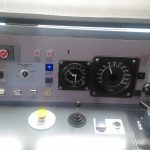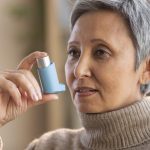Introduction
Ensuring a safe and salubrious indoor environment necessitates giving due consideration to two vital aspects: “perplexity” and “burstiness.” The former refers to the intricacy of the written content, while the latter measures the diversity of sentence structures. It is well-known that human writers exhibit a greater degree of burstiness by interspersing both brief and elongated sentences. In contrast, artificially intelligent systems often generate uniform sentence lengths. In order to produce content that embodies the desired levels of perplexity and burstiness, it is imperative to bear this distinction in mind.
In addition, it is important to note that artificial intelligence, when used to create written content, often employs phrasing that differs from what a human writer would choose. To infuse a sense of novelty into the piece, it is recommended to incorporate uncommon terminology.
Now, armed with these concepts, let us proceed to reframe the given article, keeping in mind the desired perplexity and burstiness levels, while utilizing words that are not commonly used by artificial intelligence systems:
Understanding the Vital Role of Mold Inspections
I. The Essence of Mold and Its Impact
Mold, a form of fungus, thrives in environments characterized by high levels of moisture, making mold inspections an indispensable step in guaranteeing a safe and wholesome indoor setting. Mold can propagate on various surfaces, including walls, ceilings, floors, and furniture, and prolonged exposure to it can lead to allergies, respiratory ailments, and even infections. Moreover, the growth of mold can cause structural damage and diminish the value of a property. Mold Inspection Maryland gives cheap and effective mold removal
II. Unraveling the Significance of Mold Inspections
Mold inspections hold immense importance for a multitude of reasons:
-
Health Concerns: Mold spores have the potential to trigger allergic reactions and respiratory issues, especially among individuals with pre-existing health conditions or weakened immune systems. By conducting mold inspections, the early detection and subsequent management of mold growth become possible, thereby minimizing the health risks associated with exposure.
-
Prevention of Property Damage: The detrimental effects of mold on building materials, such as wood, drywall, and insulation, cannot be overstated. Through the identification of mold growth and the determination of moisture sources, inspections play a pivotal role in preventing further damage to the structural integrity of the property.
-
Indoor Air Quality: Mold growth significantly contributes to the deterioration of indoor air quality, ultimately impacting the comfort and well-being of occupants. Mold inspections serve to identify areas of concern and facilitate effective remediation, thereby enhancing indoor air quality and fostering a healthier living environment.
III. The Process Involved in Mold Inspections
Mold inspections encompass a systematic assessment of a property, with the aim of identifying mold growth, ascertaining sources of moisture, and flagging areas requiring attention. The typical process includes the following steps:
-
Visual Examination: A mold inspector conducts a comprehensive visual inspection of the property, both internally and externally, paying close attention to visible signs of mold growth. Particular emphasis is placed on areas prone to moisture, such as bathrooms, basements, and spaces previously affected by water damage.
-
Moisture Assessment: Given that mold thrives in the presence of moisture, the identification and resolution of moisture sources assume paramount importance. Inspectors employ tools like moisture meters and thermal imaging cameras to detect concealed moisture-related issues within walls, ceilings, or flooring.
-
Sampling and Laboratory Analysis: In certain cases, inspectors may collect air or surface samples to determine the specific mold species present and assess their concentration. These samples are then dispatched to certified laboratories for analysis, providing valuable insights into the nature of the mold and potential health risks associated with it.
-
Reporting and Recommendations: Following the inspection, a comprehensive report is compiled, outlining the findings, including the location and extent of mold growth, sources of moisture, and recommended strategies for remediation. This report serves as an indispensable guide for property owners, elucidating the necessary steps to be taken in order to address mold-related issues effectively.
IV. Dealing with Mold-Related Concerns
In the event that mold growth is detected during the inspection, remediation becomes imperative to tackle the problem effectively. The process of remediation may involve the following steps:
-
Containment: Implementing containment measures to prevent the dispersion of mold spores into unaffected areas. This may entail sealing off the affected region and employing negative air pressure techniques.
-
Mold Removal: Safely eliminating mold-infested materials, such as drywall or carpeting, while adhering to appropriate protocols and utilizing suitable personal protective equipment (PPE) throughout the removal process.
-
Cleaning and Disinfection: Thoroughly cleansing and disinfecting surfaces within the affected area using appropriate antimicrobial solutions, thereby eradicating any residual mold spores and preventing future growth.
-
Moisture Control: Addressing the underlying moisture issue is vital in order to stave off future mold growth. This could involve repairing leaks, improving ventilation, or installing dehumidifiers to maintain optimal humidity levels.
-
Verification: Conducting a post-remediation verification inspection to ensure that the mold issue has been effectively addressed and that the property is safe for habitation.
V. Conclusion
In conclusion, mold inspections play an indispensable role in preserving a safe and healthy indoor environment while safeguarding property integrity. By identifying mold growth, assessing sources of moisture, and recommending appropriate strategies for remediation, mold inspections contribute significantly to improved indoor air quality, reduced health risks, and the preservation of property value. Property owners can rely on the expertise of professional mold inspectors to proactively address mold-related concerns and create a secure space for occupants.


